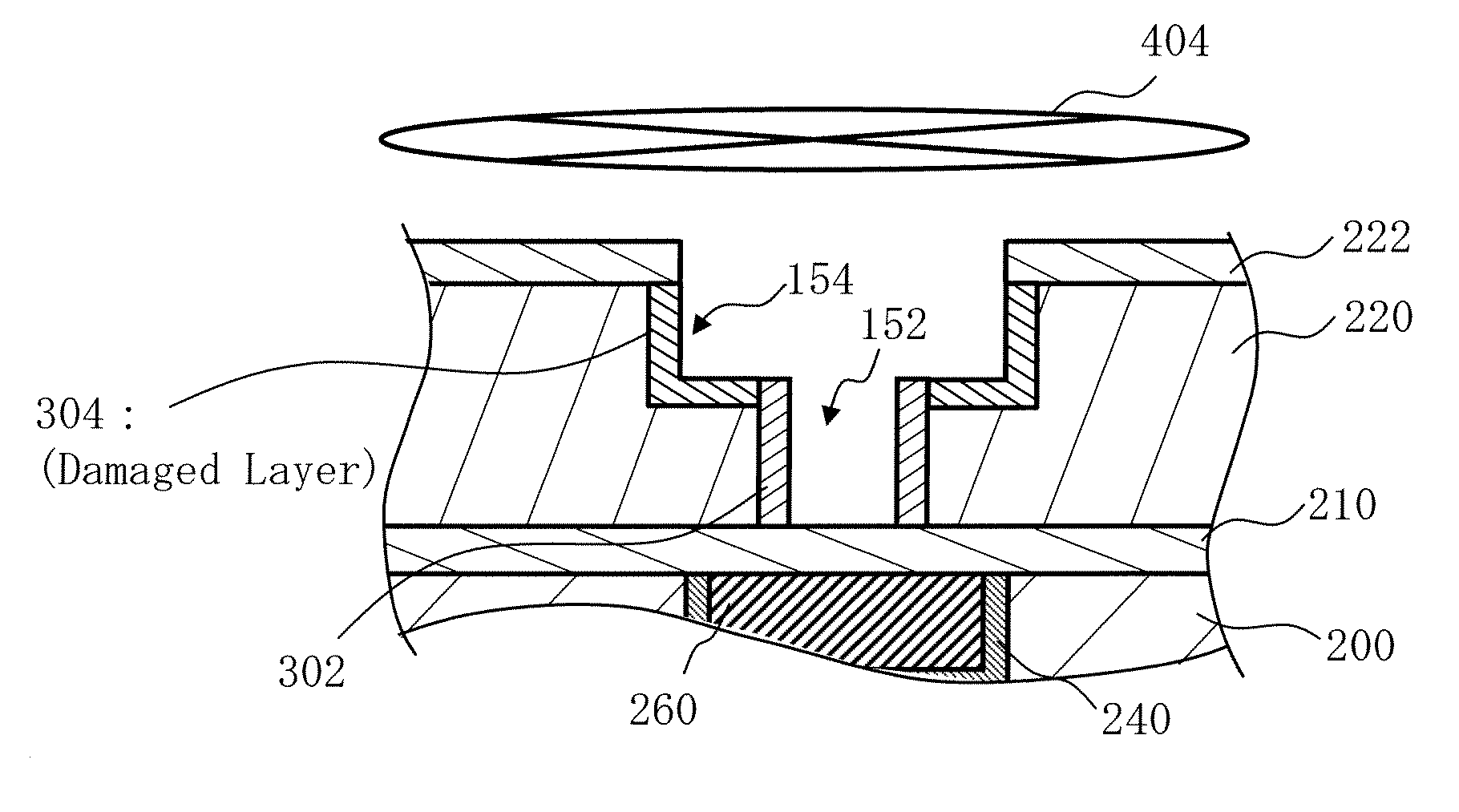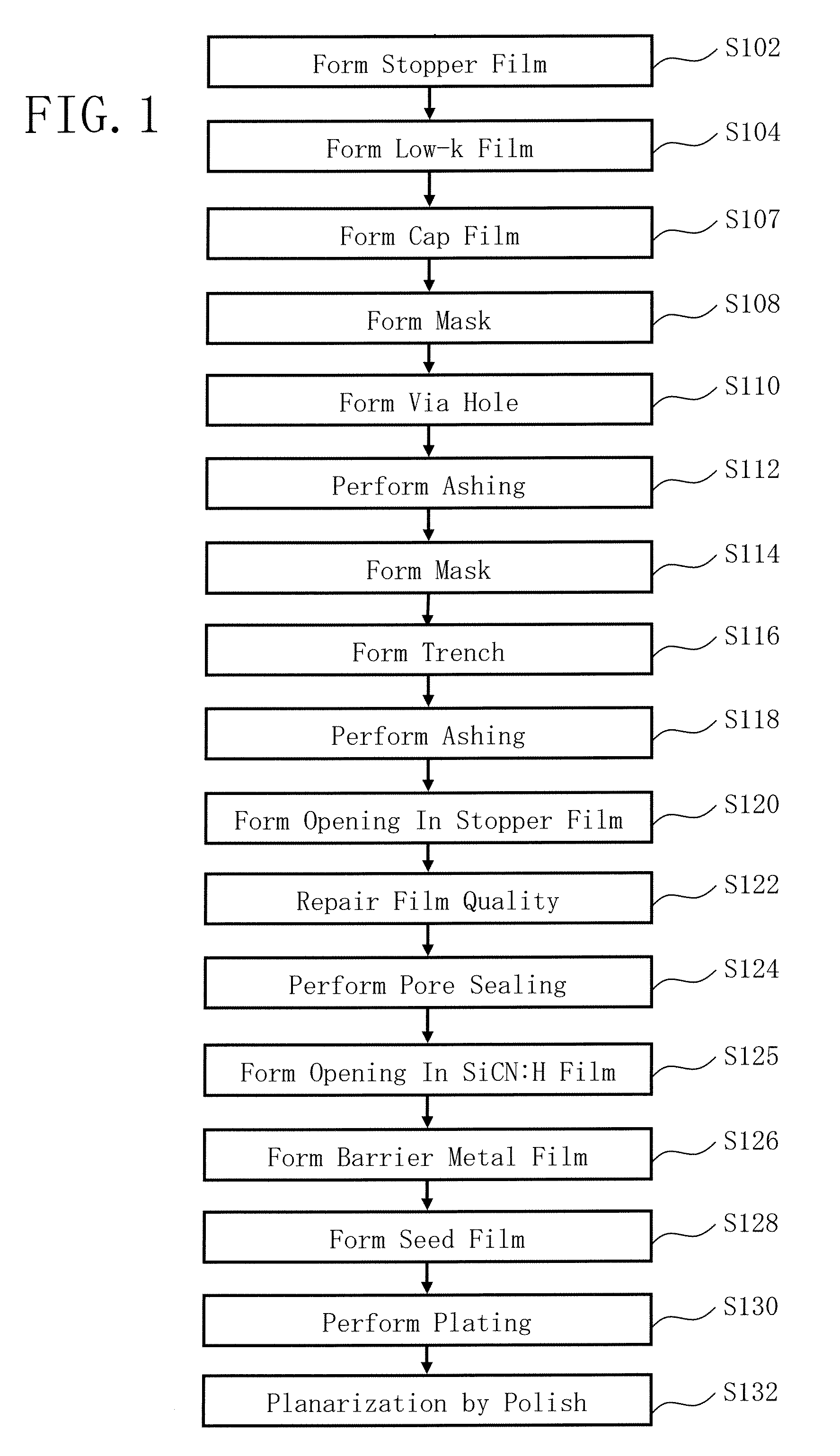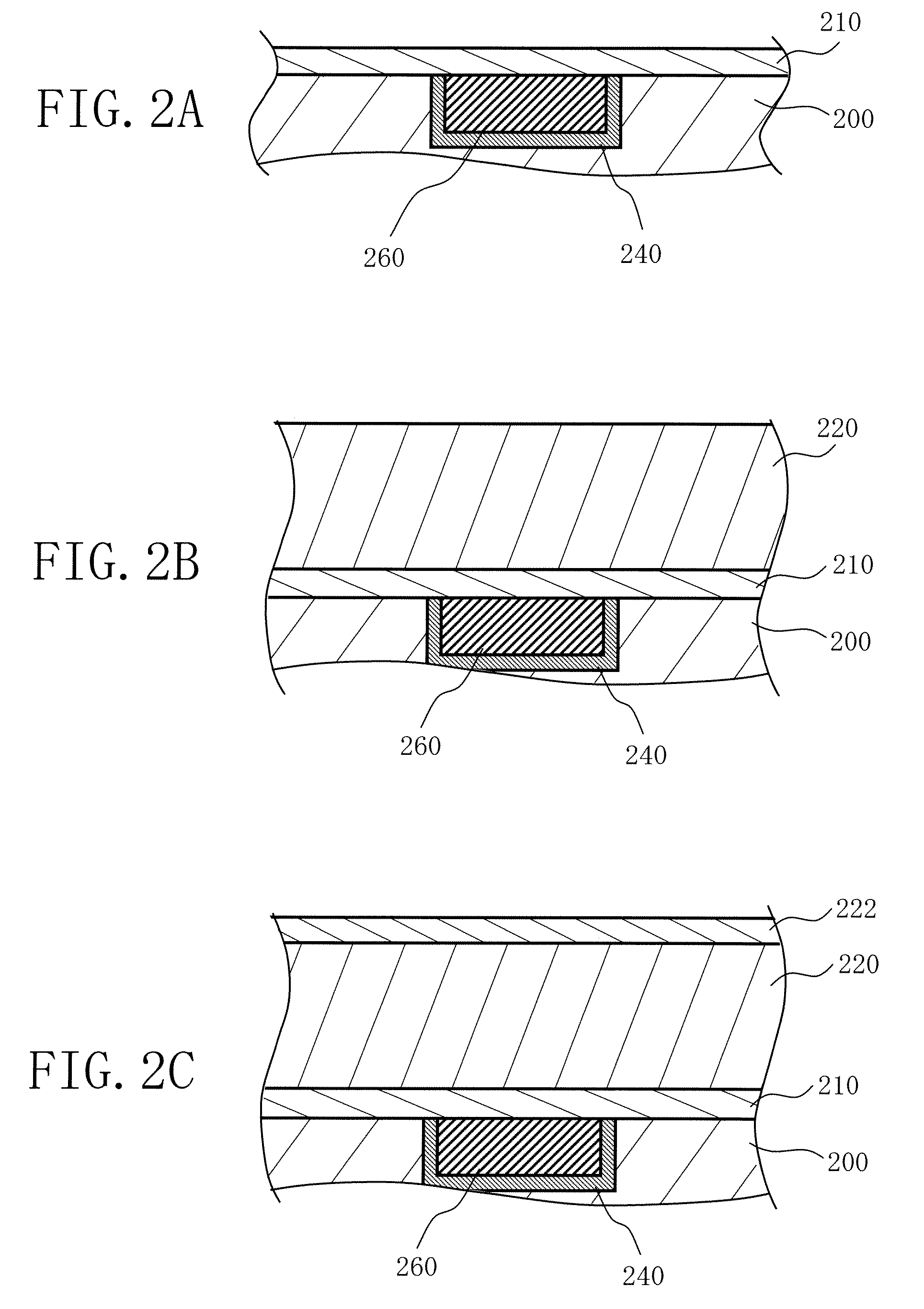Method for fabricating semiconductor device
a semiconductor device and fabrication method technology, applied in semiconductor devices, semiconductor/solid-state device details, electrical devices, etc., can solve the problems of mechanically weaker film strength, inter-wire parasitic capacity and signal transmission delay due to wire resistance, and the damage of sico film by coating method or cvd process,
- Summary
- Abstract
- Description
- Claims
- Application Information
AI Technical Summary
Benefits of technology
Problems solved by technology
Method used
Image
Examples
first embodiment
[0034]A first embodiment will be described below using drawings. FIG. 1 is a flow chart showing principal parts of a method for fabricating a semiconductor device in the first embodiment. In FIG. 1, the present embodiment performs a series of processes including a stopper film formation process (S102) to form a stopper film, a low-k film formation process (S104) to form a low dielectric constant insulating material (low-k material) film, a cap film formation process (S107) to form a cap film, a mask formation process (S108) to form a mask, a via hole formation process (S110) to form a via hole, an ashing process (S112), a mask formation process (S114) to form a mask, a trench formation process (S116) to form a trench, an ashing process (S118), a stopper film opening process (S120), a film quality repair process (S122) to repair film quality, a pore sealing process (S124), a SiCN:H film opening process (S125), a barrier metal film formation process (S126), a seed film formation proce...
second embodiment
[0072]In the first embodiment, the manufacturing method for a semiconductor device was described by focusing on repairs of a damaged layer and pore sealing. In a second embodiment, a manufacturing method for a semiconductor device will be described by focusing on repairs of a damaged layer, improvement of mechanical strength, and improvement of plasma resistance.
[0073]FIG. 11 is a flow chart showing principal parts of a method for fabricating a semiconductor device in the second embodiment. In FIG. 11, the second embodiment performs a series of processes including the stopper film formation process (S102) to form a stopper film, the low-k film formation process (S104) to form a low dielectric constant insulating material (low-k material) film, the cap film formation process (S107) to form a cap film, the mask formation process (S108) to form a mask, the via hole formation process (S110) to form a via hole, the ashing process (S112), a film quality repair process (S113) to repair fil...
third embodiment
[0098]Material in the form of gas that can be used for the repair reaction and incorporation of Si—C—Si backbone structures into the film in the second embodiment may be used as a gas used for the film quality repair process and the pore sealing process in the first embodiment. That is, a gas having a Si—R1 group replacing the Si—OH group and also the Si—C—Si bond is used. Accordingly, in addition to effects of the first embodiment, mechanical strength and plasma resistance of the low-k film 220 can further be improved. Gases of materials that can be used in the second embodiment for film quality repairs react very rarely and a reaction with each other seldom occurs. For example, Si(CH3)2NH2SiCH2Si(CH3)2NH2 reacts with each other very rarely during film quality repairs and a reaction with each other seldom occurs. Then, a pore sealing film can be formed in the pore sealing process by making the gas react with each other by providing reaction energy of plasma or the like. Thus, with ...
PUM
| Property | Measurement | Unit |
|---|---|---|
| thickness | aaaaa | aaaaa |
| relative dielectric constant | aaaaa | aaaaa |
| relative dielectric constant | aaaaa | aaaaa |
Abstract
Description
Claims
Application Information
 Login to View More
Login to View More - R&D
- Intellectual Property
- Life Sciences
- Materials
- Tech Scout
- Unparalleled Data Quality
- Higher Quality Content
- 60% Fewer Hallucinations
Browse by: Latest US Patents, China's latest patents, Technical Efficacy Thesaurus, Application Domain, Technology Topic, Popular Technical Reports.
© 2025 PatSnap. All rights reserved.Legal|Privacy policy|Modern Slavery Act Transparency Statement|Sitemap|About US| Contact US: help@patsnap.com



